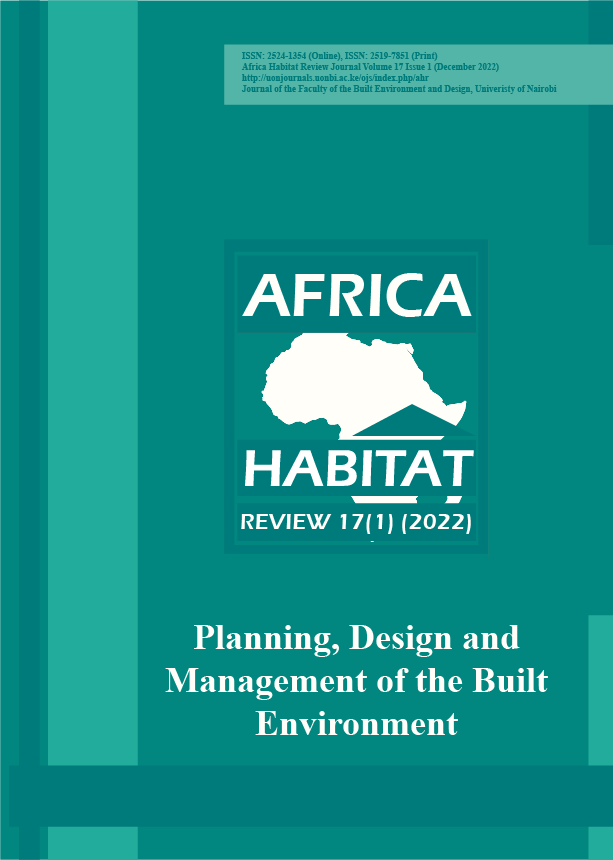Impacts Of Covid-19 Pandemic on Accessibility in Nairobi City
Abstract
The present study evaluates the impacts of COVID -19 pandemic on accessibility to land use sites such as work environments, education, shopping centres, recreational and conference facilities among other services in Nairobi City. The study therefore analyses accessibility factors of travel time, length of journey, cost of travel behaviour. The study focuses on periods before COVID -19, during lock-down and after lock-down (normalcy) in Nairobi City. The research uses both primary and secondary data sources to examine the Impacts of COVID-19 on accessibility in Nairobi City. The independent variables measured against accessibility included travel time, travel cost and frequency of travel. The research used household questionnaires to collect data along the Ngong Road and Thika Road corridors. The data was analysed and interpreted to provide reliable information on real impacts of COVID-19 pandemic on households in urban dwellings. The study established that COVID -19 had significant impacts on physical accessibility to land use sites, particularly during peak lock-down period. The present research uses social norms and social identities theories to explain the change in public behaviour occasioned by the need to manage COVID-19 Pandemic. Social households therefore opted to use online modes as a substitute to physical access to work, schooling, shopping, worship, recreation, meetings, conferences and other socio-economic activities. This research recommends the increased and complementary use of both virtual and physical modes as a means of access in normal urban living., Planning authorities should consider planning residential neighbourhoods with- spaces and facilities that support alternatives to physical access to various socio-economic activity sites.


